
cook islands
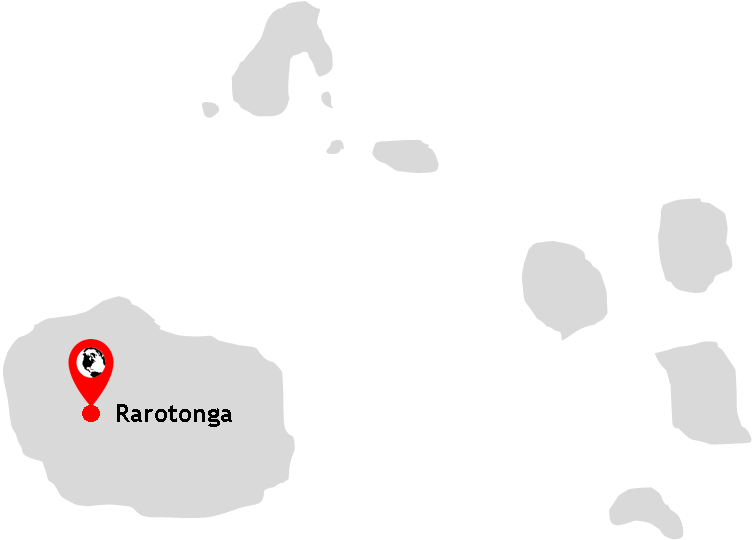
Where: Rarotonga, Cook Islands. Oceania.
When: July 2023
What: Crossing the International Date Line, Hiking a Polynesian paradise island from one end to the other - the Cross-Island Hike, Kayaking in a Pacific Ocean lagoon, Wigmore's Waterfall, snorkelling at Arua Beach, Rarotonga coastal road drive.
Wildlife spotting: Eagle Ray, Blue Starfish, Turtle, Fiddler Crabs, Sea Cucumbers, Red Postman Butterfly, Roosters and countless (friendly) stray dogs.
How: International flight, taxi, walking, hire car, kayak, public bus.
Country counter: No.94
Illnesses or mishaps: Rope burns on a descent during the Cross-Island Hike, multiple mosquito bites, abandoning snorkelling because of unsafe conditions; being charged at by a farmyard cow.
It has been over three decades since the last direct flight took off from Sydney bound for the Cook Islands. Since then any traveller in Australia seeking adventure in this Pacific island nation had little option but to fly via New Zealand. I'm pretty proud to say that, whilst not heading to the Cook Islands on the inaugural flight, I was on the second. Extra intrepid points earned there, I feel! My flight to Rarotonga, the main island of the Cook Islands, took me the furthest east I have ever travelled - so far in fact that, for the first time, I crossed the International Date Line. There's a certain poetic appeal in this, undoubtedly, but a practical one too; in crossing it I went back in time by 20 hours. I departed at 11pm on Sunday and arrived at 8am on...Sunday. I had my Sunday twice and, on my return flight, lost my Thursday. I travelled so far east that I ended up at the start of the World map, as it's conventionally shown, with the Americas first. I love these quirks of travel. This curious crossing of a crucial chronological boundary brought me to a colonial-era throwback of a place with 15 islands characterised by wooden roadside shacks, tin roofs, intermittent internet coverage and plenty of smiling faces. The Cook Islands has, unquestionably, the most colonial name of any country I have visited named, as it is, after the (in)famous Captain of British exploration and imperial conquest. The Cook Islands has strong connections with New Zealand and takes the Kiwi dollar as its official currency. The food you will find on the shelves of convenience stores are invariably brands from New Zealand, and the Kiwi accent can be heard at every turn. Predictably, and depressingly, the Cook Islands flag features a Union Jack inset into the top left hand corner just like so many other former colonies I've been to.
We based ourselves in the Titikaveka district on Rarotonga's south east coast, hiring a small villa with an open plan kitchen, bedroom and lounge. The small kitchen came with most things we needed to cook our own meals, which we opted to do most evenings having bought our groceries from the Wigmore's supermarket five minutes' drive further down the coast. The villa came complete with a friendly stray dog that would take to sitting with us on the patio, keen to finish off what was left of our dinner by licking the bowl clean. We also had a small gecko living in the rose fitting of the ceiling fan; he'd occasionally make an appearance in the evening scouting for his insect-based snacks.
Our villa was a few metres from a Pacific island beach which could have graced the cover of a glossy travel magazine: azure ocean waters speckled with dark coral patches beneath the surface, sprouting coconuts gathered in clusters underneath tilting palm trees leaning out to shore and blue starfish basking in the shallow waters like hand-sized navy jewels. A natural reef about a kilometre out to sea meant that the waters of the Titikaveka lagoon were gentle and shallow - ideal for spotting fish, sea cucumbers and starfish from on-board my kayak. We even sighted a turtle and something called an Eagle Ray. It was thanks to a couple of locals who were out snorkelling with their dog that we got to see these last two creatures of the Pacific. "Turtle! Turtle! Coming your way!" and "Eagle Ray! Eagle Ray - coming towards you" the woman took to shouting in her mangled vowels so characteristic of the Kiwi and Cook Islander accent. Admittedly we were above the water but it was cool to see their shadowy shapes pass speedily by our kayaks. "Did that dog follow you out?" I asked, assuming it was one of the many strays living on the beach. It was the elephant in the watery room I felt; who goes snorkelling with their dog? . "No, he's ours. He's an adventure dog", came the somewhat unexpected reply.
That afternoon we put the hire car to good use by taking a drive around the island. When I say "around" I mean this literally: the 32 kilometres of the Coastal Road encircling the island. It takes no less than an hour to come full circle, provided you're not tempted to pull over for photographs, take a walk down to a particularly beautiful beach spot or grab a coffee - all of which, of course, we did. Of particular note was our short pit-stop at Avarua Beach in the late afternoon - by which time the ocean's waters had receded, exposing seemingly thousands of Fiddler Crabs which took to darting into their sandy holes as we approached. Their disproportionately large pink claw on the right-hand side was a truly oxymoronic sight which hovered somewhere between horrific weapon and camp appendage. Less animated, but no less intriguing, were the pickles of Sea Cucumbers lazily basking in what remained of the ocean's waters. We concluded our circumnavigation of Rarotonga with a stop at Trader Jack's, a local watering hole serving food and something of a Cook Islands institution. As we waited for our pizzas to cook, we took time to watch the locals playing in the lagoon, some heading out on team kayaks and others just splashing around in the dwindling light of the day. The pizzas arrived; we needed a hearty meal because the following day we were to conquer Rarotonga's famous Cross-Island Hike.
We set off in the morning, our backpacks stuffed with snacks, a battery pack and carrying as much water as any camel worth his humps would be proud of. This was a 10.2 kilometre hike, beginning in the island's north. Our destination? The island's south. The hike took us across fast-flowing streams with slippery boulders as stepping stones, up steep banks of mud with a web of tree roots acting as nature's ladder to what became a 327 metre ascent to a dark shard of rock known as The Needle. Chains bolted to the sides led up to the top of this intimidating edifice, alas a peak I would not be summiting. Even with the safety chains this sheer vertical beast was beyond my climbing capabilities and, indeed, my nerves. A small warning plaque at the foot of this monolith was enough to convince me to play it safe. Climbing The Needle is not part of the Cross-Island Hike anyway, but an added extra should you wish to be heroic or stupid enough to undertake the challenge. Although clouds draped themselves around the mountaintop like bed sheets billowing in slow motion, and the sky a smorgasbord of monochromes, the views of the tree-covered valley were nevertheless a hiker's worthy reward. Unusual flowers, the like I have not seen before, occasionally but unashamedly graced the trail, as did a species of brightly-coloured butterfly called the Red Postman which seemed to appear and disappear as if trying to guide us through the forest. We were even joined by a couple of altitude-loving Roosters - one of which burst into a "cockle-doodle-do!" at an intersection along the trail. This wasn't the toughest hike up a mountain I've undertaken (that title has to go to Mount Sorrow in Queensland, Australia) but this wasn't the easiest either. Nevertheless, I'm pretty proud to be able to justly claim that I've hiked from one side of a Polynesian island to the other. You can check out our hike from coast to coast as mapped by our mobile phone app here.
Attempts to go snorkelling at Arua Beach the following day were cut short; strong winds whipped up the waters resulting in cloudy conditions below. Furthermore, the current was also mighty strong. Within minutes of entering the water I soon found myself struggling to get back to shore, the current seemingly determined to sweep me off down the coast. Indeed, looking around me it was clear that many others had reached the same conclusion; snorkellers were conspicuous by their absence and those who had braved the waters soon returned to shore, grumbling about the unfavourable conditions. Wet and deflated, we headed for a spot of lunch at the highly-rated Beluga Café, a place which came complete with a wandering Rooster, several hens and chirping chicks. Free-roaming Roosters are something of a motif on the island. Soon after, the rains moved in and had us retreating to our villa back at Titikaveka.
A beautiful late afternoon sleep on the bed listening to the sound of the rain through closed insect screens seemed a fitting and relaxing denouement to my 94th country and my fifth on the continent of Oceania.
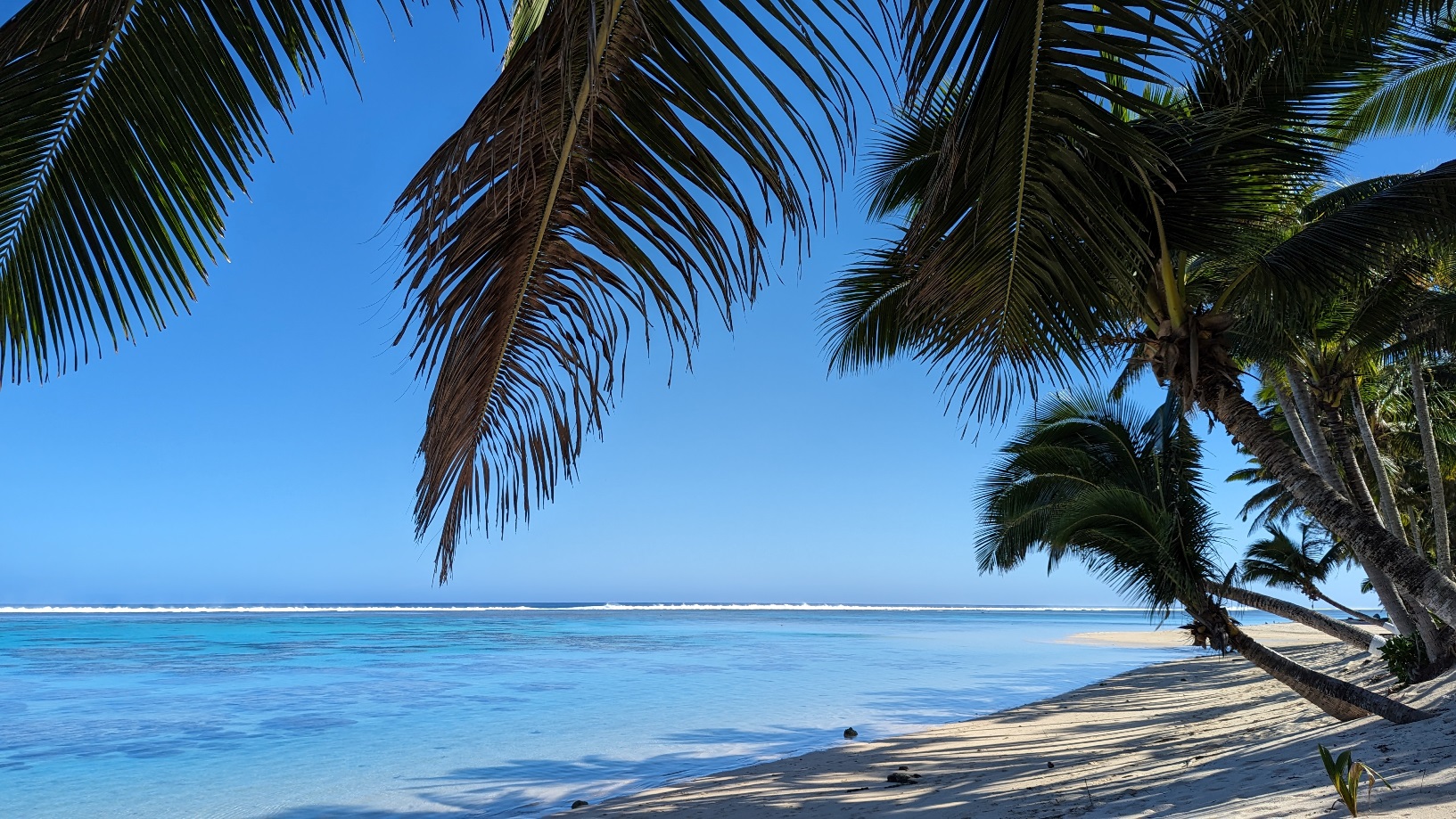

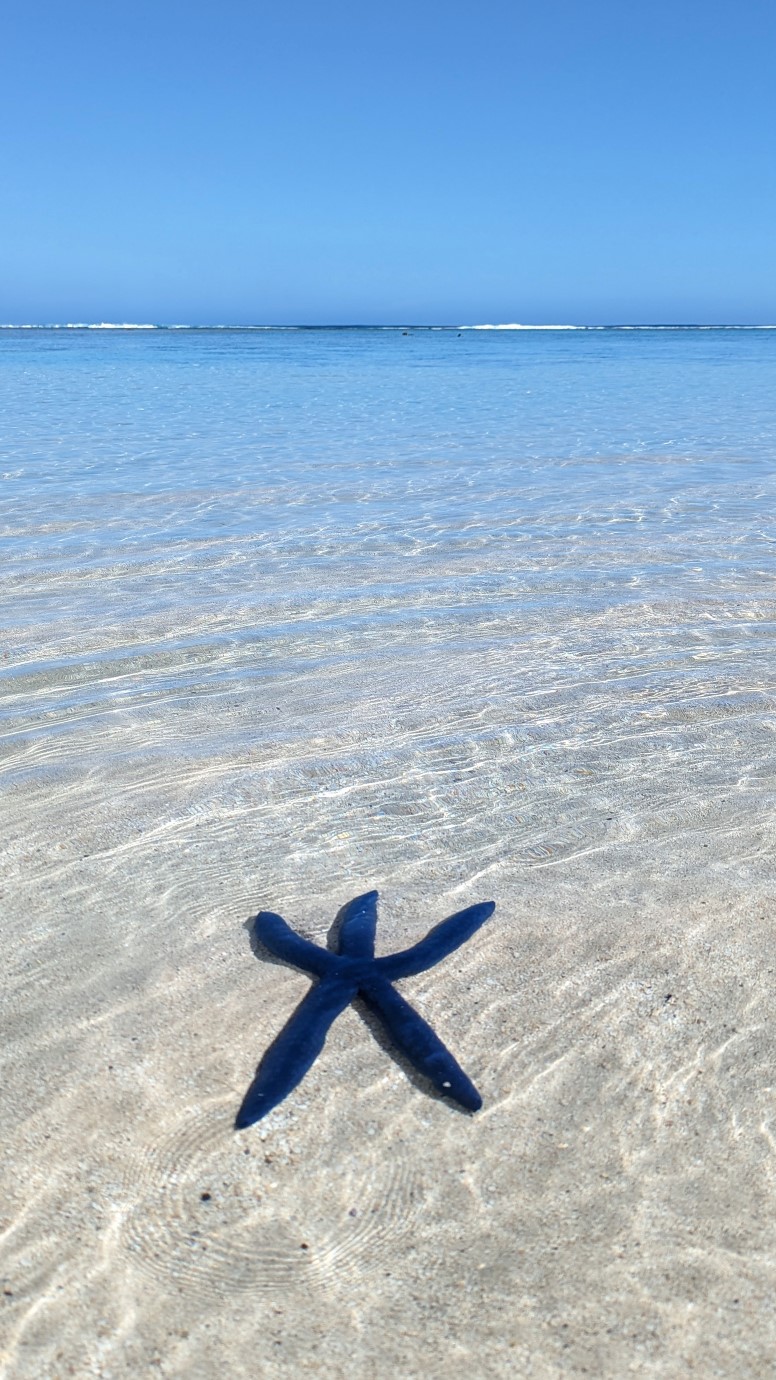
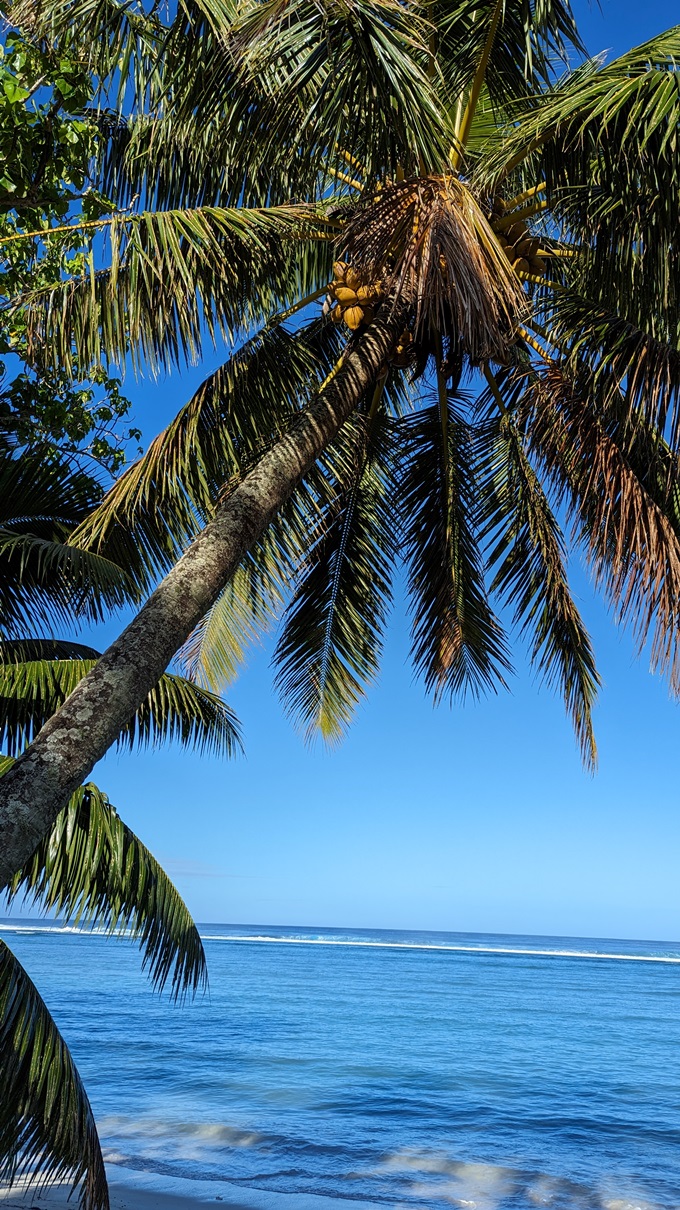
Titikaveka Beach: our villa was a few metres from a Pacific island beach which could have graced the cover of a glossy travel magazine.
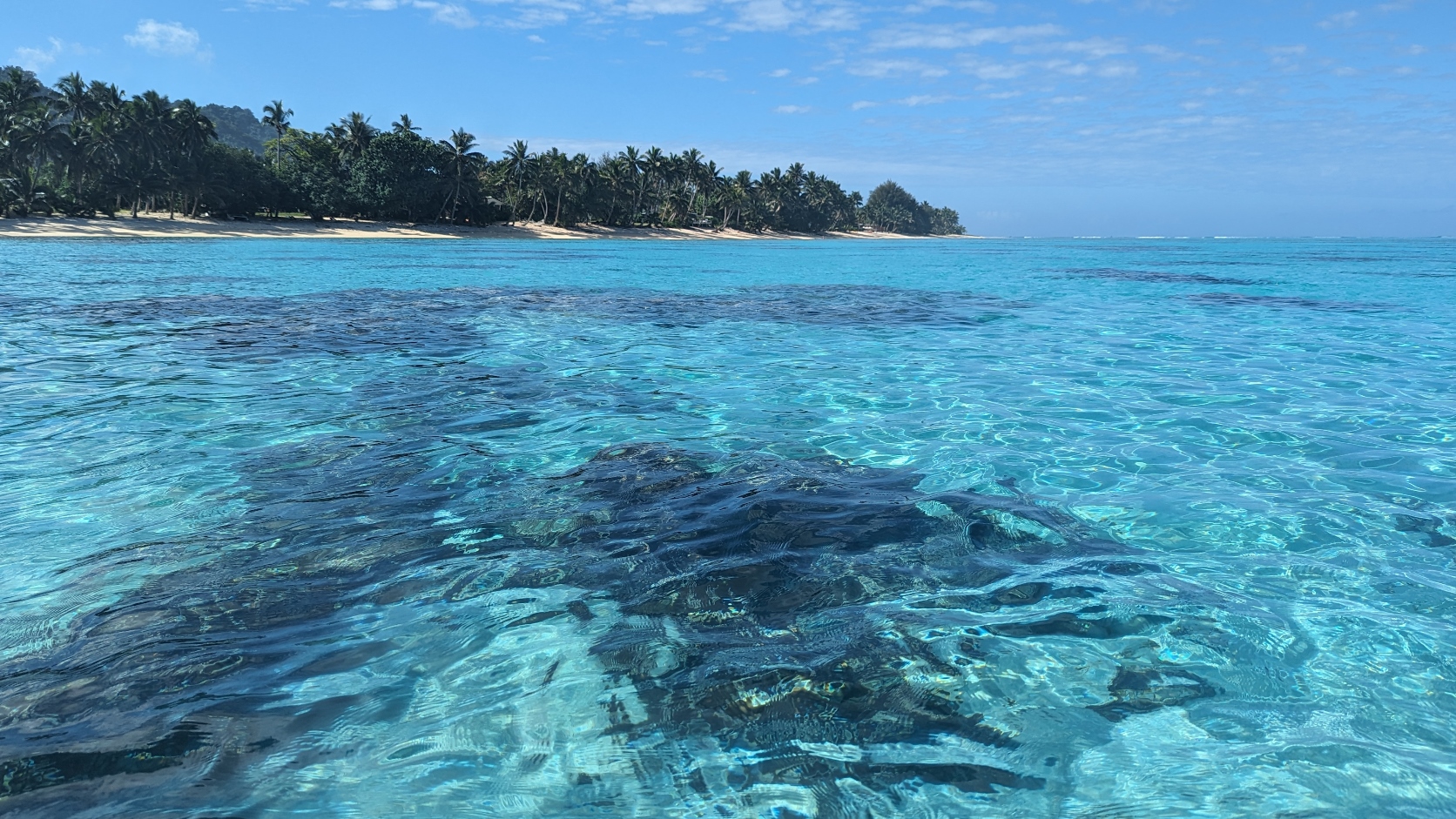
The azure ocean waters speckled with dark coral patches beneath - photographed from on-board my kayak.
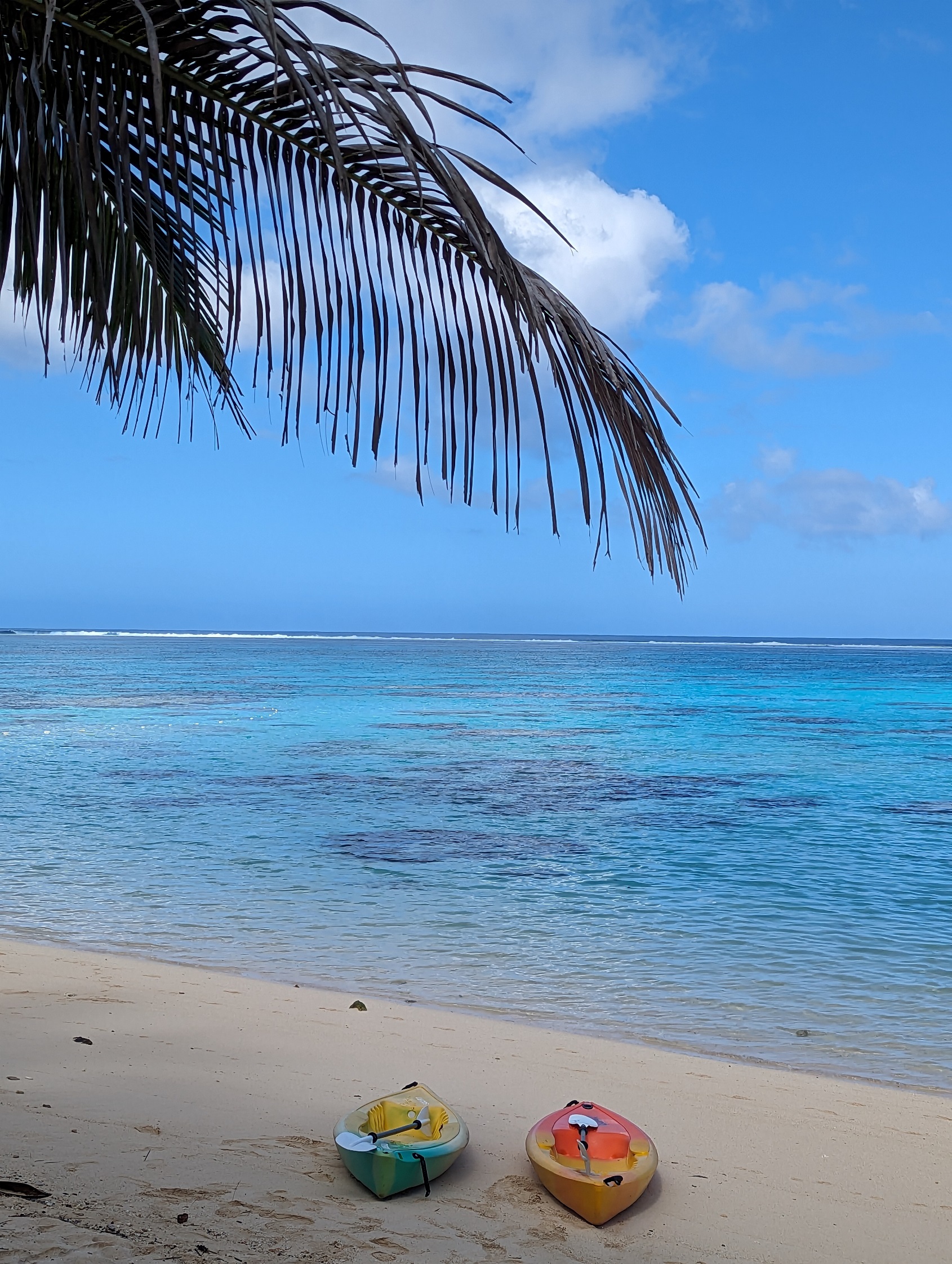

A natural reef about a kilometre out to sea meant that the waters of the Titikaveka lagoon were gentle and shallow - ideal conditions for spotting sea creatures.
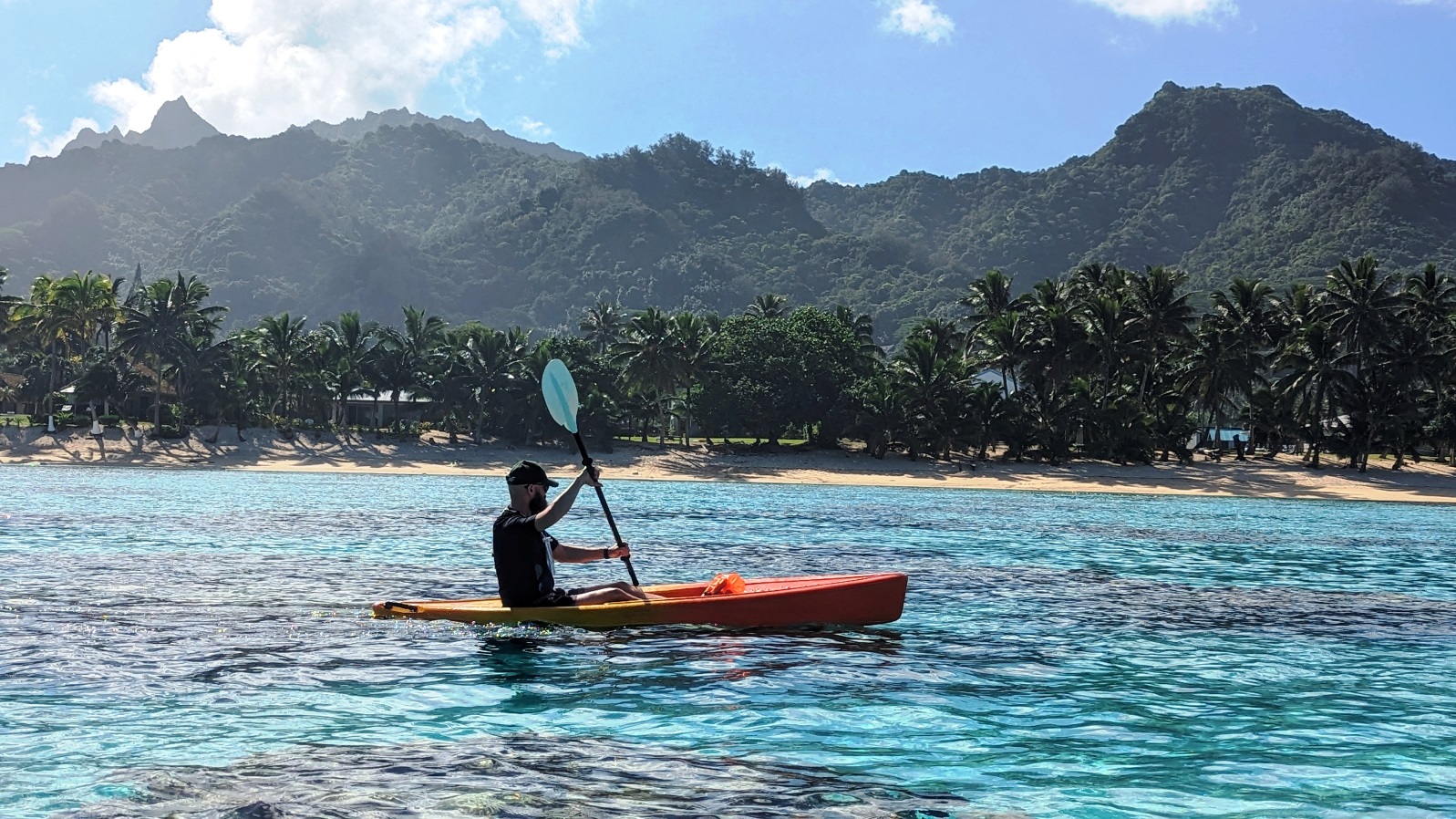
Titikaveka lagoon had the ideal conditions for spotting fish, sea cucumbers and starfish from on-board my kayak.
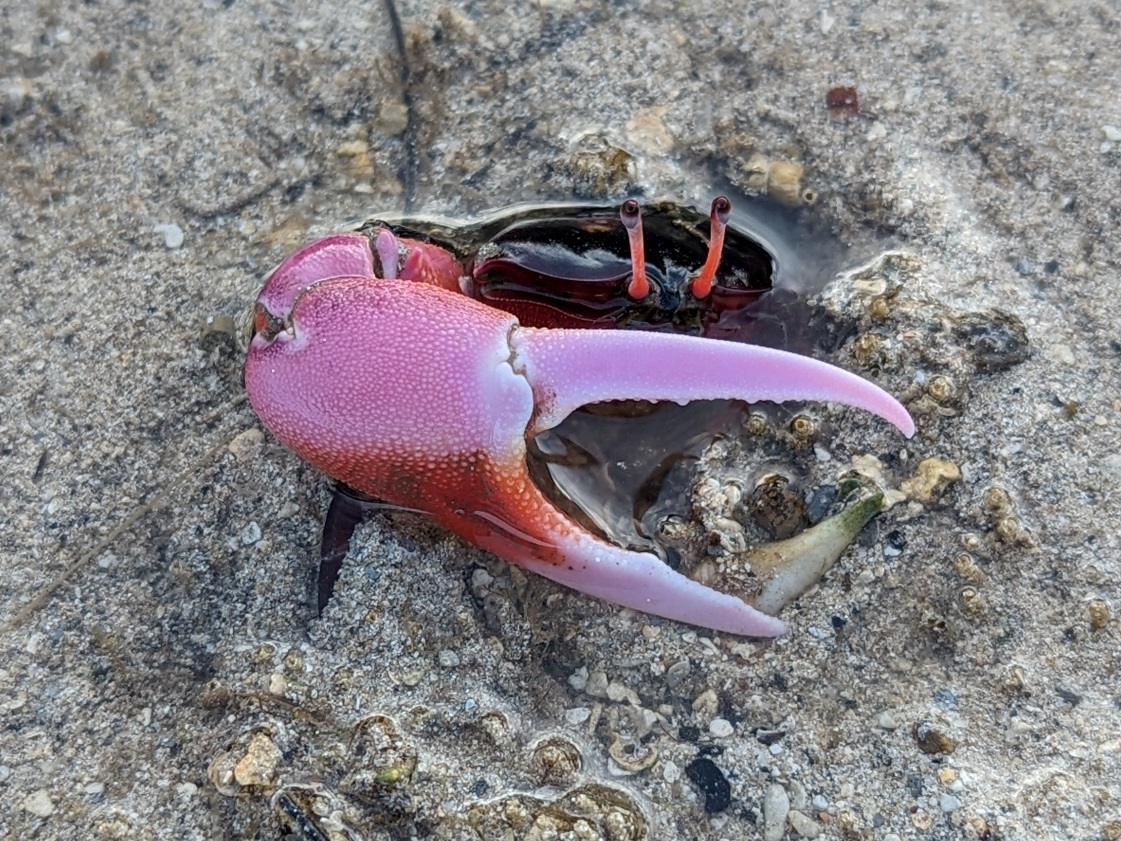
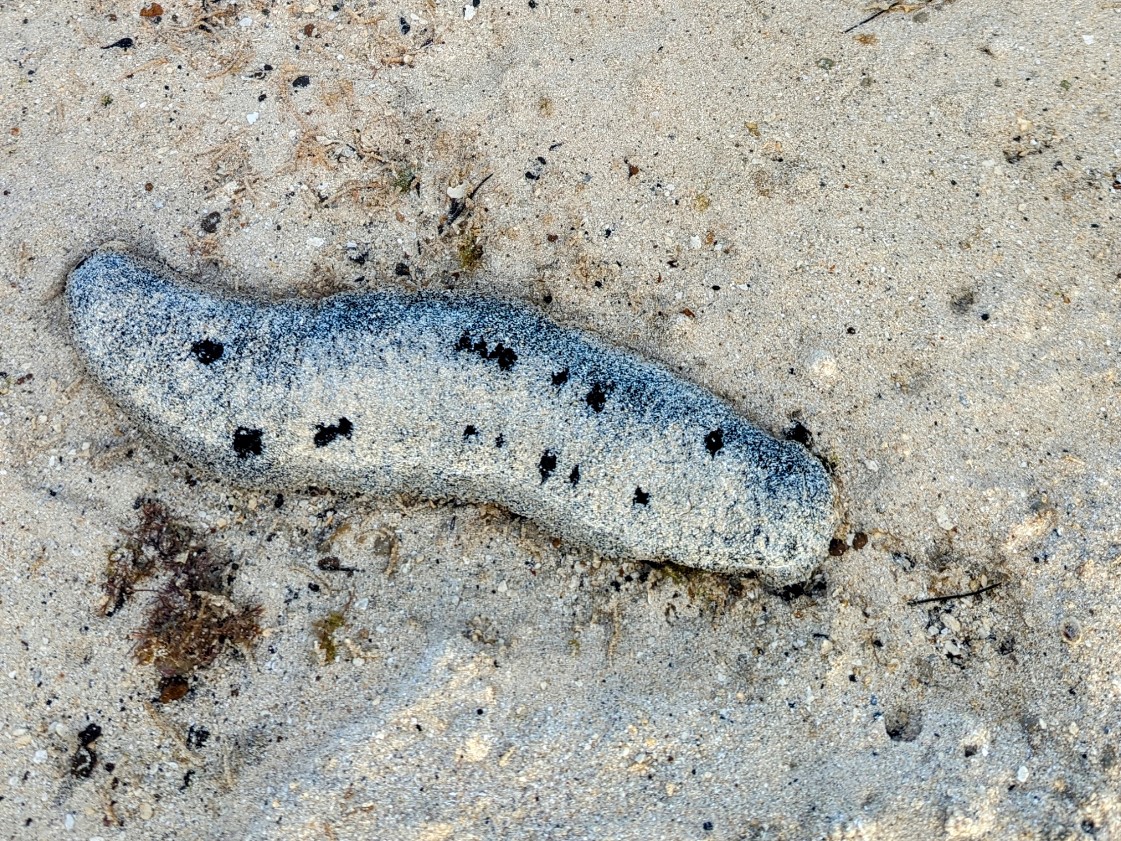

Avarua Beach, home to thousands of Fiddler Crabs and pickles of Sea Cucumbers lazily basking in what remained of the ocean's waters.

Rarotonga's Cross-island Hike, 10.2kms with an elevation gain of 387m. I'm pretty proud to be able to justly claim that I've hiked from one side of a Polynesian island to the other.
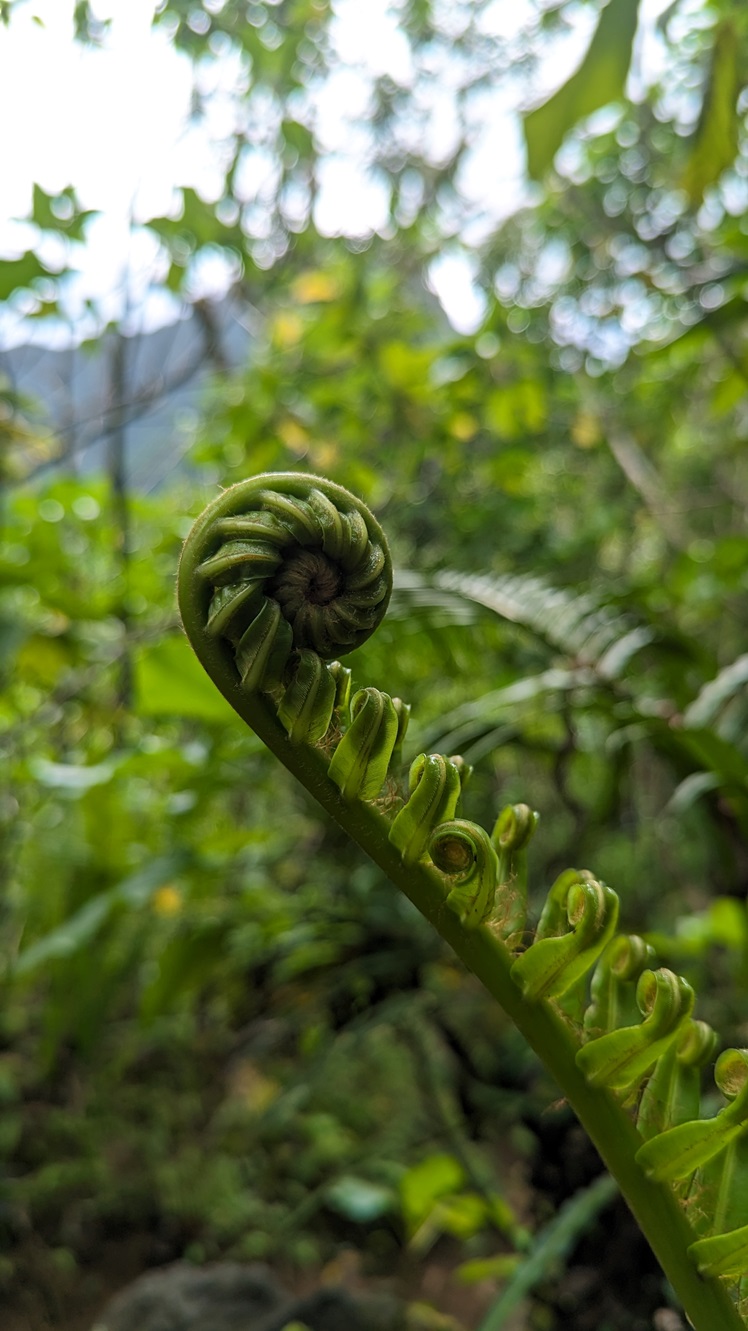

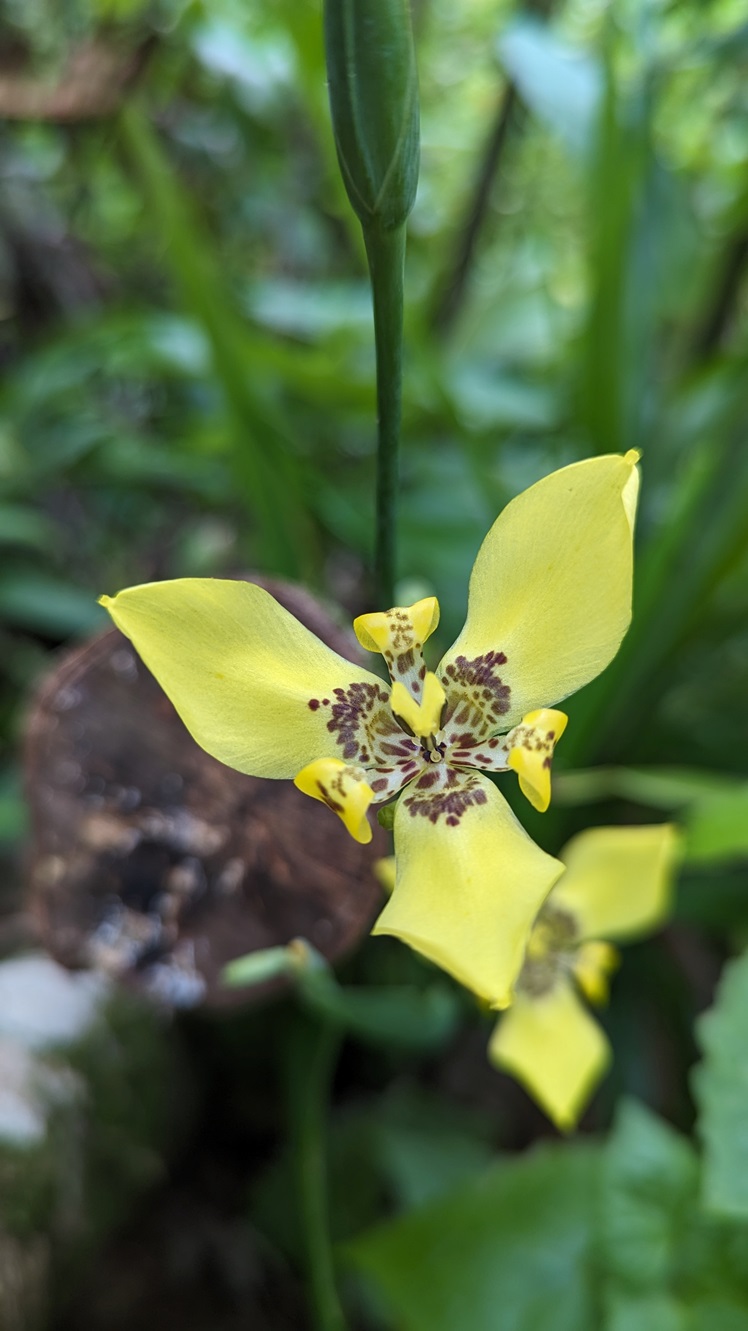
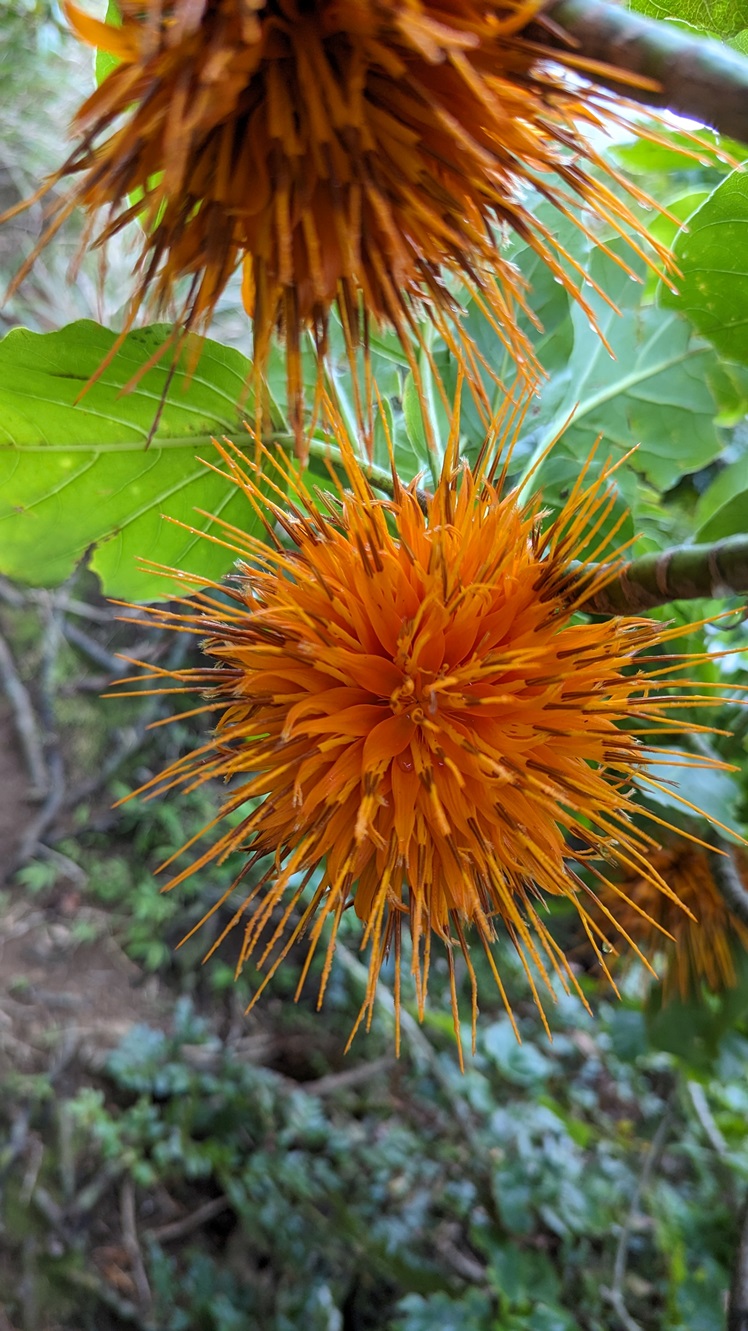
Rarotonga's Cross-Island Hike: unusual flowers, the like I have not seen before, occasionally but unashamedly graced the trail.
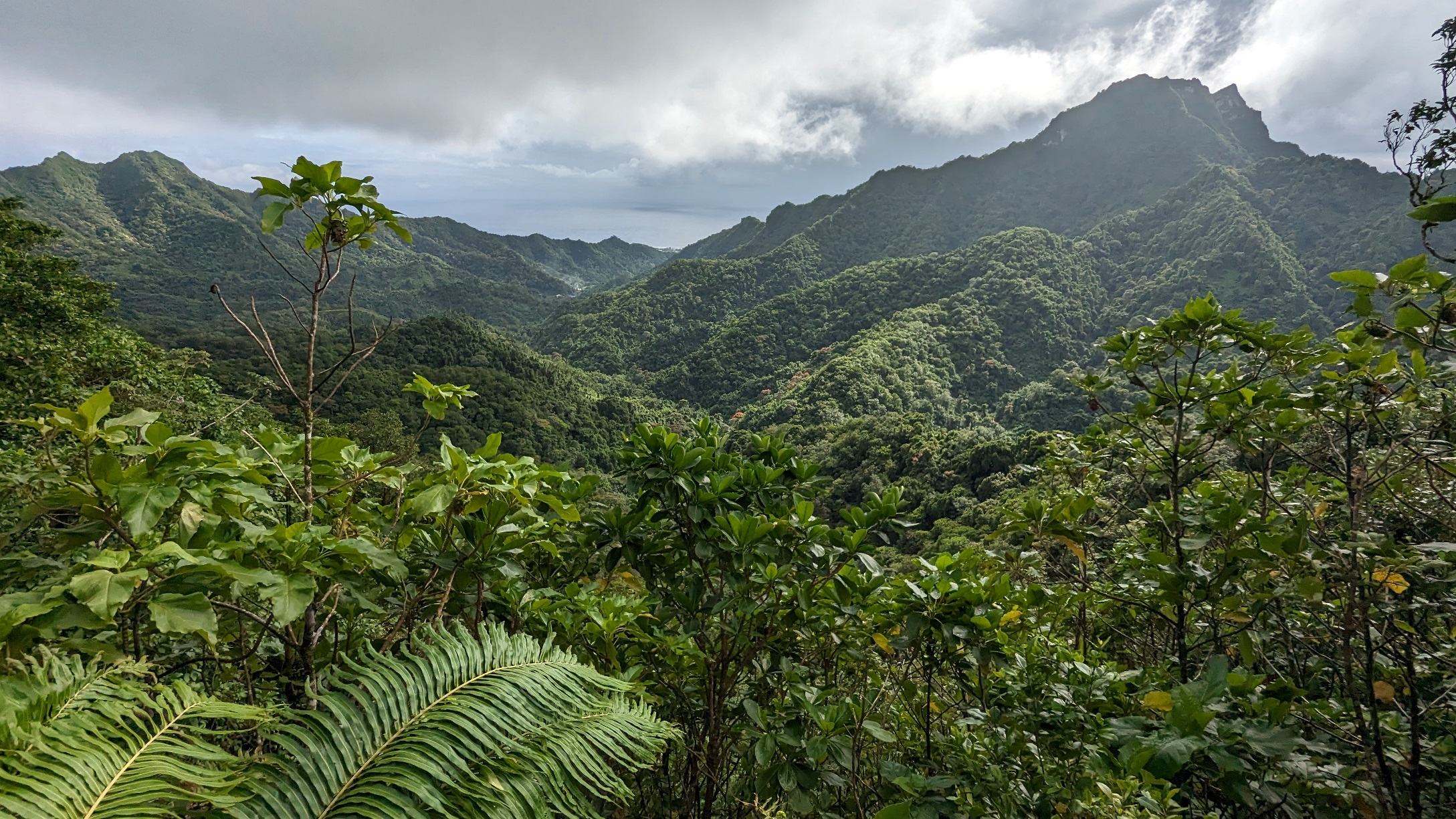
Although clouds draped themselves around the mountaintop like bed sheets billowing in slow motion, and the sky a smorgasbord of monochromes, the views of the tree-covered valley were nevertheless a hiker's worthy reward.


Rarotonga's Cross-island Hike: descending the mountainside on the ropes; The Needle.
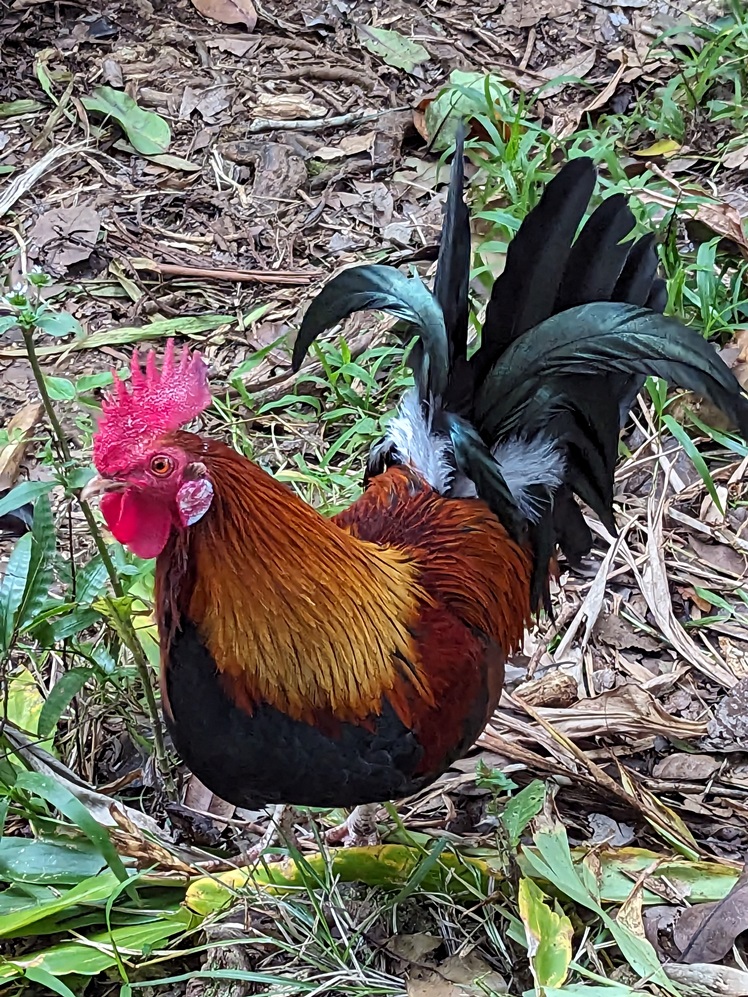

Hike wildlife: a Rooster accompanies us on our hike; a Red Postman butterfly.
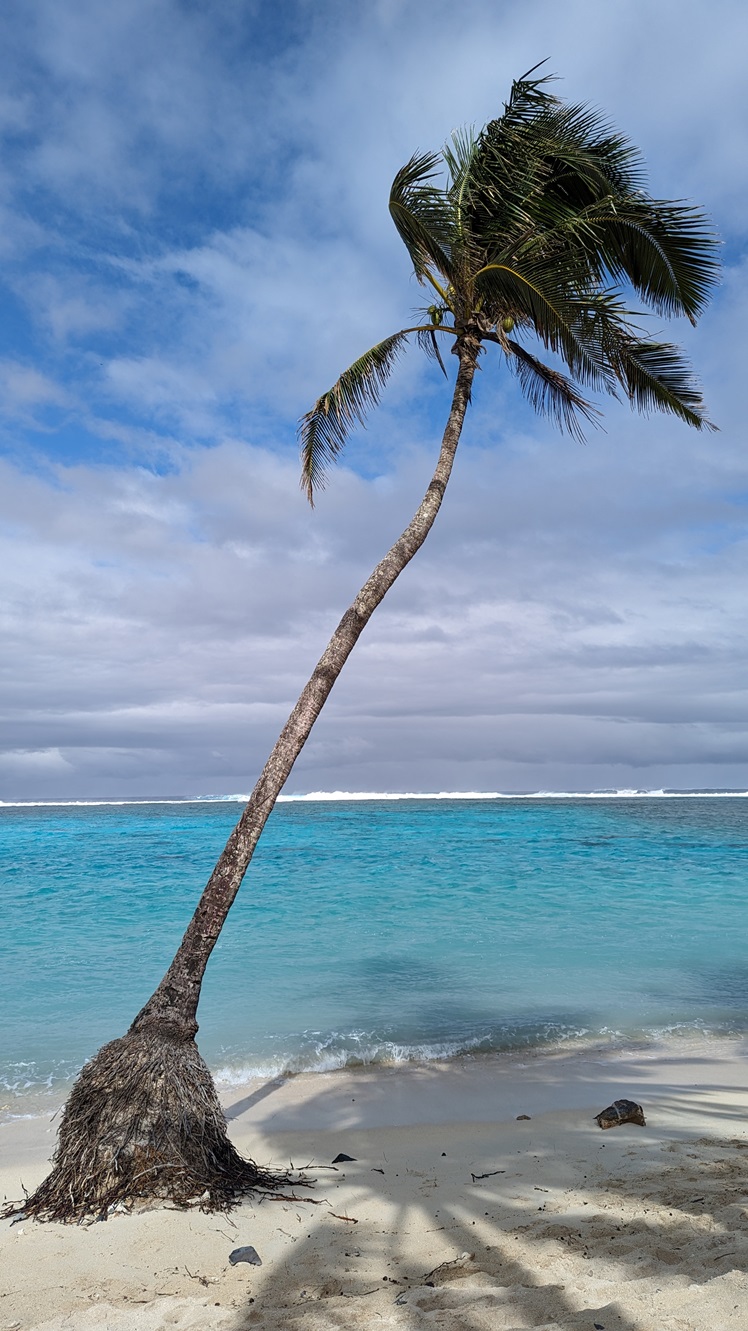

Snorkelling at Arua Beach the following day: strong winds and even stronger currents. Mission: aborted.
travel tips, links & resources
- The main Cook Islands Tourism website is a good place to start researching your trip in the Cooks. Head there from here.
- If you plan to go snorkelling and, let's face it, why wouldn't you, then it's wise to pack plasters and iodine for the almost inevitable coral cuts you will sustain. I wasn't to know it at the time, but cuts on coral can be very serious.
- Invest in a GoPro: much of what you will probably get up to on these islands involves being on or under water. If you have been thinking of buying one, and are going to a destination in the Pacific, now's your chance.
- A handy high resolution tourism map of Rarotonga can be downloaded from here, although these are widely available in the arrivals hall at Rarotonga Airport.
- At time of travel, internet access in the Cook Islands was available only through the purchase of Vodafone vouchers at the supermarket. The island has hotspots in the busiest places along the coast. I bought 7.5GB for $35NZ and it lasted me for the duration of the trip (five days) with just light social media use, no streaming. Internet speeds were just fast enough to enable me to check-in for my flight.
- Rarotonga is served by buses with a published timetable. Both routes travel the circumference of the island - one in a clockwise direction, the other in an anti-clockwise direction. However, the timetable should be filed under 'Myths and Legends'. There's one bus per hour in either direction but don't put too much store by the expected time - it'll arrive when it arrives. You're on Polynesian time now! It's best to leave your impatience at home.
- As in other Pacific countries and island nations where most things have to be imported, prices can be exorbitant. Anyone who has travelled to this part of the world knows it is not cheap. We cooked most of our meals in the villa, buying our food from a local supermarket. However, it was probably not much cheaper than eating out in restaurants. If you're on a budget you may choose to bring some food items with you - just make sure you declare them on your Cook Islands arrival card.
- There have been reported cases of Dengue Fever in the Cook Islands. The usual methods for avoiding getting bitten by mosquitoes should apply during your time here (Cook Islands Ministry of Health).
- Free-roaming Roosters are something of a motif on the island. No-one owns them and they seem to be everywhere. Foam earplugs offer the prospect of a better night's sleep and are a necessity on Rarotonga; these creatures start their "cock-a-doodle-doo" chorus from 4am. Indeed, our villa came with free earplugs along with the more conventional shampoo and conditioner.
you may also like
